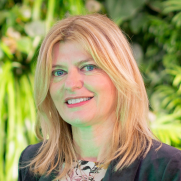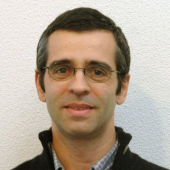|
|
|
Lectures and Keynotes > Day 3 - Design and Manufacturing09:00-10:00: Keynote "A vision towards bio-inspired sustainable robotics" - Barbara Mazzolai
Abstract: Natural organisms are adaptive, constantly learning, and evolving. Since the dawn of life on Earth 3.8 billion years ago, species have developed behaviors with characteristics suited to survival in their environment, ensuring the sustenance of life for generations. Nature does not pursue perfection; it prioritizes evolution. Therefore, nature experiments, recombines existing elements, and adapts based on results. So why are roboticists looking to natural organisms for the robot revolution? By studying the life and evolutionary strategies of natural organisms, engineers can derive the principles to design and develop functional embodiments and energy-efficient behaviors, which are crucial for artificial machines to navigate unstructured and challenging environments. With this vision, our approach is to draw inspiration from plants and soft animals to design robots with high morphological adaptability, distributed sensory systems, and energy-saving mechanisms. Specifically, in this presentation, I will explain how soft animals and plants offer new insights for generating multifunctional materials for morphological adaptation and computation, mechanisms for moving by growing, strategies for climbing and adhesion, multi-sensory information processing, distributed architecture of functionalities, as well as new forms of energy. These eco-robots will have applications in environmental exploration, monitoring, precision agriculture, and advancing our understanding of natural phenomena.  Bio: Barbara Mazzolai is the Associate Director for Robotics and the Director of the Bioinspired Soft Robotics Laboratory at the Istituto Italiano di Tecnologia (IIT), Genoa. From February 2011 to March 2021, she served as the Director of the IIT Center for Micro-BioRobotics (CMBR). She earned her Bachelor's degree in Biology (with Honours) from the University of Pisa, Italy, and obtained her Ph.D. in Microsystems Engineering from the University of Rome Tor Vergata. Between July 2012 and 2017, she held the position of Deputy Director for the Supervision and Organization of the IIT Centers Network. In 2017, she was a Visiting Faculty at the Aerial Robotics Lab, Department of Aeronautics, at Imperial College London. In 2024, she has been appointed as a contract professor to teach a course in Soft Robotics at the Politecnico of Milan. Barbara Mazzolai is a member of the Scientific Advisory Board (SAB) of the Max Planck Institute for Intelligent Systems (Tübingen and Stuttgart, Germany), of the SAB of the Max Planck Queensland Centre (MPQC) for the Materials Science of Extracellular Matrices, as well as of the Advisory Committee of the Cluster on Living Adaptive and Energy-autonomous Materials Systems - livMatS (Freiburg, Germany). Since 2024, she has served as the Deputy Editor-in-Chief of the Soft Robotics Journal. Her research work revolves around bioinspired soft robotics, where she combines principles from both biology and engineering to advance technological innovation and scientific knowledge. She has been the Coordinator of several EU-funded projects in this field, including PLANTOID, GrowBot, and I-SEED. In May 2021, she began her European Research Council (ERC) Consolidator Grant titled "I-Wood," focusing on Forest Intelligence: robotic networks inspired by the Wood Wide Web. 10:00-11:00: Lecture "Design and Manufacturing: Basics and Importance of Material-Process-Shape Relationships" - Olivier PiccinAbstract: The session will cover first some basic aspects related to the manufacturing of soft and flexible structures. From there, we will outline the strong links between manufacturing techniques and on one hand the selection of materials, based on their intrinsic properties, and on the other hand adequate shapes for robot and robotic structural components. Examples in the context of soft robot design and continuum robot design will be used.  Bio: Olivier Piccin is an associate professor at ICube and INSA Strasbourg, France. He received the Mech. Eng. degree from École Nationale Supérieure d’Arts et Métiers, France, and the Ph.D. degree from the University of Toulouse, France (LAAS-CNRS) in 1992 and 1995, respectively. From end 1995 to 1998, he was Head of the robotics and automation service for body-in-white spot welding applications in PSA-Peugeot Citroën Company, Vélizy, France. His research interests include mechanical and mechatronic design of rigid and soft robots with a focus on how to build and produce them.
11:30-12:30: Keynote "Soft robots with stiffening capabilities" - Kaspar AlthoeferAbstract: to come  Bio: Professor Kaspar Althoefer is a systems engineer, leading research on Robotics at Queen Mary University of London. After graduating with a degree in Electronic Engineering from the University of Technology Aachen, Germany, and obtaining a PhD in Robot Motion Planning from Kings College London, he joined the Kings Robotics Group in 1996 as a Lecturer. Made a Senior Lecturer in 2006, he was promoted to Reader and Professor in 2009 and 2011, respectively. In April 2016, he joined Queen Mary as full Professor of Robotics Engineering. His current research interests are in the areas of robot autonomy, soft robotics, modelling of tool-environment interaction dynamics, tactile sensing and neuro-fuzzy-based sensor signal classification with applications in robot-assisted minimally invasive surgery, rehabilitation, assistive technologies and human-robot interactions in the manufacturing environment. 13:30-14:30: Keynote "Deformable objects: towards a softness aesthetic" - Samuel BianchiniAbstract: Deformable robotics offers a number of often-explained functional advantages, whether it's for handling fragile objects, squeezing into tight, irregular spaces, bending but not breaking, etc. But what about its aesthetics? What sensitive dimensions does it convey? As a relatively recent "material" in the world of artistic creation, how can we approach it by taking advantage of its deformation processes as so many aesthetic operations, i.e. as particular qualities of movement capable of provoking our human sensibility? Beyond that, can we also think of sensitivity in terms of those objects for which deformation could be a way of feeling their physical relationship to the world? And, of course, since this relationship can also be a relationship with humans, it's possible to envisage a shared sensibility, as when two beings touch. At a distance or through touch, visual or tactile, or even as part of proprioception, deformation is deeply embedded and "moves" us in a body-to-body relationship that is all the more subtle because the movements we're referring to are continuous and organic. These particular, intrinsic qualities will be presented and discussed through several examples of art and design creations featuring various types of continuous robotics.  Bio: Samuel Bianchini is an artist and teacher-researcher (professor, habilitated to supervise research) at École nationale supérieure des Arts Décoratifs (EnsAD, PSL University, Paris). He lives and works in Paris. With more than 100 collective and 20 solo exhibitions, his works are regularly presented in Europe and around the world. His creations involve physical as well as symbolic operations, in context, in public and in real time, stimulating us to contemplate, to think as much as to act. Supporting the principle of an “operational aesthetic”, Samuel Bianchini works on the relationship between the most forward-looking technological “dispositifs”, modes of representation, new forms of aesthetic experiences, sociopolitical organizations and ecological issues. To this end, he collaborates with scientists and engineering research laboratories: Institut FEMTO-ST (Franche-Comté Electronics and Mechanics Thermal and Optical - Science and Technology), Orange Labs, CEA (French Alternative Energies and Atomic Energy Commission, Saclay), ISIR (Institute for Intelligent Systems and Robotics, Sorbonne Université-CNRS), etc. In close relation to his research and artistic practice, Samuel Bianchini has undertaken theoretical work, which has led to numerous publications including the collective book Practicable. From Participation to Interaction in Contemporary Art, MIT Press, 2016 (co-directed with Erik Verhagen); the collective book Behavioral Objects 1 – A Case Study: Céleste Boursier Mougenot, Sternberg Press, 2016 (co-directed with Emanuele Quinz and distributed by MIT Press). He also founded the international and multi-platform image-based journal .able, published by Actar (Barcelona, New York) and launched in March 2023, of which he is currently editor-in-chief.
|


